Zengjiashan Scenic Area
Zengjiashan Scenic Spot is located in Chaotian District of Guangyuan City, south foot of Qinba and the combination of Sichuan and Shaanxi. It covers 6 townships and townships with 70,000 people, with an average elevation of 1400 meters, a total area of 586 square kilometers, a forest coverage of 74%, and a unique geological landscape. It enjoys the reputation of "karst cave kingdom" and "stone forest cave village". The annual average temperature is 12 C, and the summer average temperature is 23 C. It is a tourist and leisure resort for spring, summer, autumn red leaves and winter snow.
geographical position
The tourist attraction of Zengjiashan is bounded by Liziya in the north, Yudong River in the south, Majiatang in the West and five trees in the east. Its geographical coordinates are 106_56'38_to 106_08'55_to the East and 32_30'13_to 32 36'54_to the North latitude. Zengjiashan is 70 kilometers away from Guangyuan, 200 kilometers from Mianyang, 380 kilometers from Chengdu and 130 kilometers from Hanzhong. It has become the junction of Sichuan, Shaanxi and Gansu provinces. The establishment of transportation networks such as Baocheng double-track, 108 National highway, Beijing-Kunming high-speed railway and Xicheng high-speed railway will further develop Zengjiashan's position advantage and integrate Zengjiashan tourism industry into the development of regional economy in an all-round way. In addition, Zengjiashan is the convergence point of the three central cultures on the western Shudao line. The three central cultures are: the western Sichuan culture centered on Chengdu, the silk culture centered on Lanzhou and the Guanzhong culture centered on Xi'an.
Climatic characteristics
Zengjiashan belongs to subtropical monsoon humid climate. The annual average temperature is 12 C, the summer average temperature is 23 C, and the winter average temperature is 6 C below zero. The annual rainfall is 1300 mm and the annual average sunshine is 212 days. It has not only the characteristics of humid climate in the south, but also the bright climate in the north. Its climate characteristics can not be replicated in other scenic spots.
natural environment
Zengjiashan Scenic Area has an average altitude of 1400 meters, a total area of 518 square kilometers, a forest coverage of 74%, a wide range of animals and plants, good air quality, is a green natural oxygen bar. It has not only beautiful natural scenery, but also rich geological landscape. Zengjiashan is characterized by karst geological resources. It has karst landscapes such as stone forest, stone bud, canyon, funnel, karst cave, falling water cave and underground river. It enjoys the reputation of "karst cave kingdom" and "stone forest cave village". The typical karst landscapes almost cover all types of temperate subtropical karst zones.
Main attractions
The Zengjiashan scenic spot in Guangyuan consists of "five major parks" (i.e., forest landscape park, agricultural sightseeing park, folk custom park, geological exposition park, ecological health garden) and "six major scenic spots" (i.e., stalagmite flat, Sichuan cave, Hanwang cave, Dangtan River, Maliuxia, Guanyin Temple) and "a long corridor of 100 km ecological new village". The total area of the forest landscape park is 497 square kilometers. There are many kinds of animals and plants in the park. There are hundreds of species of rare plants such as Taxus chinensis, forest musk deer and other wildlife. The five landscapes of Yunhai, Lin Hai, Shihai, Caohai and Snow Sea are unique. Agricultural sightseeing park covers a total area of 100,000 mu. There are eight characteristic parks in the park, such as exhibition of new varieties, fruit and vegetable picking and farming experience. Folk Custom Garden, with Zengjia Town as its main body, is the tourist center of Zengjiashan Mountain. It fully demonstrates the local customs and folk culture of high mountains, such as "Maliu Embroidery", "Lion Dance of Li Jia" and "Pingxi Nuo Opera". Geological Expo Park is rich in fossils of paleontology. The typical karst landscapes include all types of temperate and subtropical karst zones. The "giant stone buds" in the stalagmite plateau and the "urn-shaped vertical caves" in the Chuandong Temple are rare in the world.
Zengjiashan Scenic Spot has been awarded National Agricultural Tourism Demonstration Site, National AAAA Class Tourist Spot, the first 10 Summer Resort Tourist Areas in Sichuan Province, Provincial Geological Park, Guangyuan Leisure Resort, and Zengjiashan Creation Base of Sichuan Moruo Art Academy.
Shi Miao Ping
Located 8 kilometers south of Zengjia Town, Shiying Village has more than 10 stalagmite peaks standing in the clouds. The peak of Shiying Peak is a stone-like eagle, so it is called Shiying Village. The cliff of the mountain behind the stalagmite is strange and spectacular.
Tianxing cave
Located in Maliu Township, because there is a large cave in the cave, the day can bathe in sunshine and rain, and the night can watch the bright moon - the Star Cave. As soon as you enter the cave door, you will feel the cool breeze blowing and the light smoke and mist floating over your head. Following the arch of the cave top, there are different postures on the top. Some are like lotus flowers, some are like bamboo shoots at birth, and some are like luxurious chandeliers. They are magnificent.
Hangtan River
About 5 kilometers west of Zengjia Town, it is the surface part of the submerged river. The outflow water is Qiaopi Cave. The whole length of the river is about 2 kilometers. The river is nine folds with the peak, 33 dangerous beaches and beautiful scenery. Finally, it falls into a huge water cave and returns to the underground river.
Chuan Dong
Located at the foot of the main mountain in Zengjiazhen, it is named for the main temple on the top of the main mountain. Chuandong Temple is located in the primitive forest, the natural landscape is very unique, stepping into it, surrounded by clouds and mists, cool breeze, the air is filled with fresh fragrance. The dense original ecological vegetation and gurgling water present a simple and quiet artistic conception and charm. The main landscape of Chuandong Temple is the Tiankeng, known as "the first in Asia". The Tiankeng is about 40 meters high and has an area of about 3000 square meters. It can accommodate thousands of visitors. The top of the pit is a circular skyhole with a diameter of about 50 meters. Sunlight can be directed from the skyhole to the inside of the pit. Tiankeng is surrounded by slopes more than 10 meters wide, known as "Tianchi Six Courts". Walking into the pit, we can see the fog in the pit, the running water at the bottom of the pit, the clouds steaming everywhere, which is quite spectacular.
Historical culture
The residential buildings in Zengjiashan tourist area are rich in local characteristics. Beautiful relief and hanging corner building are typical residential styles in northern Sichuan. Maliu embroidery, Li Jiashi dance, Pingxi Nuo Opera and other folk cultures have different forms and varieties. Zengjiashan also has abundant historical resources, including Bailian relics in the late Ming and early Qing Dynasties, the tomb of a noble concubine in the Tang Dynasty, the Red Army site at the platform, the Baiyang Trestle Road site in the Pre-Qin Dynasty on the Dangtan River, etc. Religious culture is represented by Maliu Hongduguan, Lianghe Huihai Temple and Zengjia Guanyin Temple.
Special products in scenic spots
Zengjiashan cabbage is a special product of Chaotian District, Guangyuan City, Sichuan Province. Zengjiashan Cabbage is blue and green with compact leaves, thick leaves, crisp and slightly sweet taste. Zengjiashan cabbage is protected by geographical indications.
Zengjia Mountain is located in a cold mountain area with an average altitude of more than 1000 meters. It covers 6 townships and 1 town. It has flat terrain, fertile soil, humid climate, excellent vegetable quality and no pollution. Tracing back to the development of vegetable industry, it began in 2001, ten years grinding a sword, and now successfully walked out of a road of vegetable industry development in Alpine mountainous areas. According to the statistics of the agricultural department, the vegetable planting area of Zengjiashan has reached 150,000 mu in 2011, with a total output of 450,000 tons and a per capita vegetable income of 5,500 yuan, accounting for 70% of the local farmers'per capita net income. Zengjiashan has become the largest green vegetable base in Sichuan, Shanxi, Gansu and Chongqing, and the largest "vegetable basket" in northern Sichuan.
The annual or biennial herbs of Bras-sica in Cruciferae are one of our important vegetables.
Brassica oleracea L. has the function of benefiting the spleen and stomach, relieving pain and relieving pain. It can treat upper abdominal Qi pain, sleepiness, abdominal pain and other diseases. Rich in vitamins, sugar and other ingredients, vitamin A is the most abundant, and contains a small amount of K1, U, chlorine, iodine and other ingredients, especially K1 and U are anti-ulcer factors, so cabbage is often eaten for mild ulcers or duodenal ulcers, has a relieving effect, suitable for any body for long-term consumption. In addition, some sulphide-containing chemicals, which are special components of cruciferous vegetables, have anti-cancer effects, of which cabbage and carrot, cauliflower is the most famous, and known as the "three swordsman" of anti-cancer.
Zengjiashan Corn Treasure
Zengjia maize treasure has become another highlight of Zengjiashan because of its long growth cycle and pollution-free unique alpine cold climate. It was sown from early March to autumn harvest in October, combined with air-drying for half a year and special processing. It is deeply loved by the people of the Sichuan-Shaanxi Border Region. It is a delicious food for tourists who have visited Zengjiashan.
Zengjiashan sour water tofu dried, Zengjiashan bacon, Zengjiashan wild dry fungi and other local specialties, jointly constructed a unique natural health diet of Zengjiashan.
Practical information
Ticket information
Tickets for scenic spots: 50 yuan per person
Ticket-free policy: free for children under 1.2 meters in height; free for elderly people over 70 years of age with old age card or identity card; free for active servicemen with officer's card; free for guides with guide's card; free for disabled people with disability certificate; free for old Red Army, martyrs and other groups with valid certificates; free for journalists with press certificates issued by the State Publishing Agency.
Preferential Policy: Students buy preferential tickets for scenic spots with student certificates.
Opening Hours
Off-season (November 20 to March 31 next year): 08:30-17:30
Peak season (April 1-November 19): 08:00-18:00
Traffic information
Self-driving: G108 travels 11 km - right turn 940 m - left front turn - 40 m - right turn 14.3 km - 4 km to reach the destination (Zengjiashan Scenic Area).
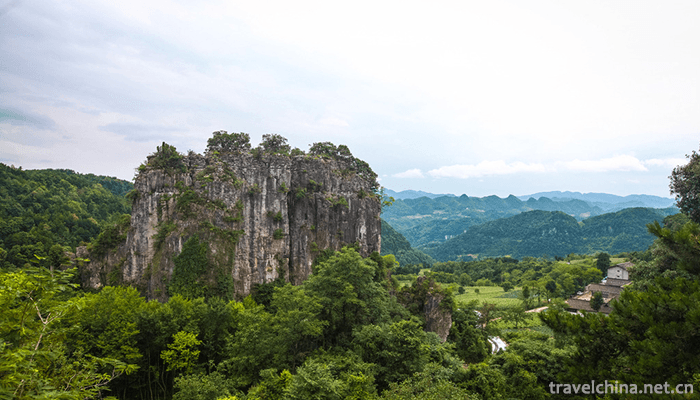
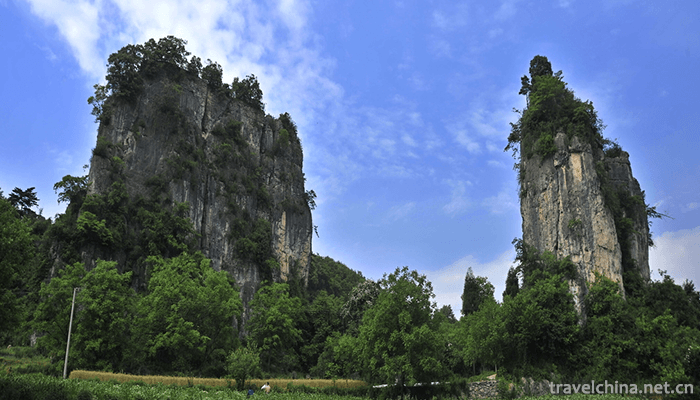
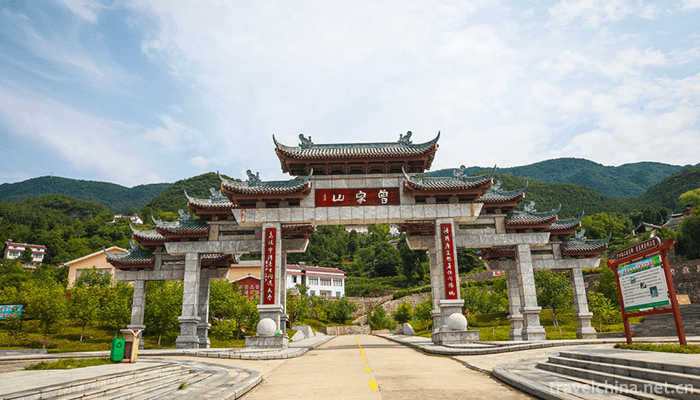
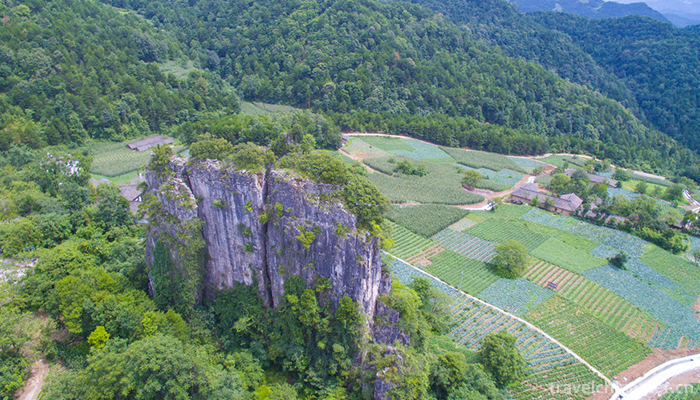
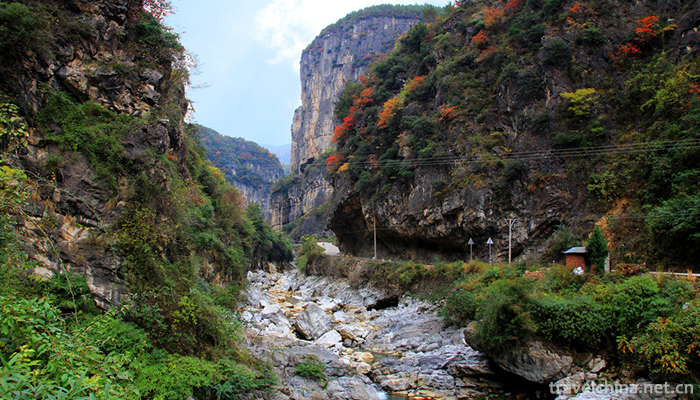

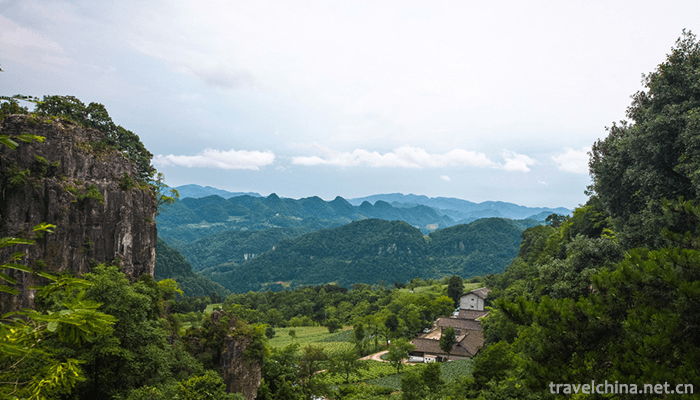

-
1.Houttuynia cordata Thunbherba houttuyniae
Houttuynia cordata Thunb. is a kind of herbal medicine collected in the Chinese Pharmacopoeia
Time 2018-10-12 -
2.Mao tofu Fried bean curd
Mao tofu Fried bean curd is a famous traditional dish in Huizhou, Anhui Province, and is well known for its vegetarian delicacies at home and abroad.
Time 2018-11-27 -
3.Gell
"Gar", which means singing and dancing in Tibetan, also means "music and dance", because performing Gar has accompaniment of special instruments. On the staff roster of the Tibetan
Time 2019-04-30 -
4.Leizhou song
According to the records in historical books, Leizhou songs were prevalent as early as the Song Dynasty. After the 1990s, people divided Leizhou dialect into different rhymes to express different cont
Time 2019-05-11 -
5.Wheat straw cut and paste
Straw clipping is a traditional folk handicraft. Also known as "wheat straw clipping", "wheat straw clipping". Using the natural luster of wheat straw and the characteristics of ru
Time 2019-05-16 -
6.Mongolian Chur
"Chuoer" is an ancient vertical wind instrument of Tuva people of Mongolian nationality in Xinjiang, which mainly distributes in Mongolian inhabited areas of Altay region. The Tuva people of
Time 2019-06-03 -
7.Lotus in Wenzhou
Wenzhou lotus is a local opera evolved from Wenzhou Taoism, and it is also one of the main operas in Zhejiang Province. It has spread to Wenzhou (including the counties under its jurisdiction) and par
Time 2019-06-28 -
8.Yao an Bazi Cavity
On June 7, 2008, Yao'an Baziqiang, declared by Yao'an County, Yunnan Province, was listed in the second batch of national intangible cultural heritage list with the approval of the State Council. Heri
Time 2019-07-11 -
9.Monkey Drum Encouragement of Yao Nationality
"Monkey Drum Dance of Yao Nationality" is called "Jiuglang" in Yao language. It is popular among Baiku Yao people in Yaoshan. "Monkey Drum Encouragement" is performed in
Time 2019-07-11 -
10.Jinhua Alsophila Nature Reserve
Jinhua Alsophila spinulosa nature reserve is a provincial nature reserve approved by Sichuan Provincial People's Government in 1987. In sifangjinggou, Jinhua Township, 48 kilometers southwest of Rongxian City
Time 2020-10-15 -
11.Daci Temple
Daci Temple, also known as the ancient great saint CI temple, is located in the first section of Dongfeng Road, Jinjiang District, Chengdu City, Sichuan Province. It was built between the 3rd and 4th centuries AD, and is known as "the first jungle of the Sinian".
Time 2020-11-05 -
12.Neijiang in yuan Ming and Qing Dynasties
In 1279, China was unified and the Yuan Empire was established. After more than 30 years of war between the end of Song Dynasty and the beginning of Yuan Dynasty, the system of Zizhou and Puzhou has not been restored except Jianzhou. In the 22nd
Time 2020-12-16